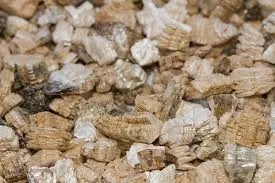Sep . 22, 2024 08:37 Back to list
refractory board material
Understanding Refractory Board Material Properties and Applications
Refractory board materials play a crucial role in various high-temperature industrial applications, particularly in sectors such as metallurgy, ceramics, and glass production. These materials are designed to endure extreme temperatures while providing excellent thermal insulation and structural integrity. This article explores the properties, types, and applications of refractory board materials.
What are Refractory Board Materials?
Refractory boards are high-performance materials made from a combination of refractory oxides, such as alumina, silica, and magnesium oxide. These materials can withstand temperatures typically exceeding 1,000°C (1,832°F) without collapsing or deforming. They are characterized by low thermal conductivity, which reduces heat loss in industrial processes, thereby improving energy efficiency.
Properties of Refractory Board Materials
1. High Thermal Resistance Refractory boards exhibit exceptional resistance to high temperatures, making them ideal for furnaces, kilns, and other high-heat environments.
2. Low Thermal Conductivity These materials provide excellent insulation, helping to maintain temperature stability and reduce energy consumption.
3. Mechanical Strength Despite their lightweight nature, refractory boards maintain high mechanical strength, allowing them to support structural loads even at elevated temperatures.
4. Chemical Resistance Many refractory boards are resistant to chemical attack from acids, bases, and other corrosive substances, extending their lifespan in harsh environments.
5. Fire Resistance Refractory boards are inherently non-combustible, providing a safe solution for high-temperature applications.
Types of Refractory Boards
Refractory boards can be classified into several types based on their composition and intended use
refractory board material

1. Alumina Silicate Boards These boards are commonly used in high-temperature applications due to their excellent thermal properties and moderate cost.
2. Magnesium Oxide Boards Known for their superior thermal stability, magnesium oxide boards are suitable for the most demanding conditions, including those found in steel production.
3. Ceramic Fiber Boards Made from synthetic fibers, ceramic fiber boards are lightweight and highly effective at thermal insulation, commonly used in industries where weight savings are critical.
4. Vermiculite Boards Vermiculite-based boards offer good thermal insulation and fire resistance, often used in fire protection and insulation applications.
Applications of Refractory Board Materials
Refractory boards are utilized in a wide range of applications, including
- Industrial Furnaces and Kilns Refractory boards line the interiors of furnaces and kilns to provide thermal protection and reduce heat loss.
- Ceramic Industries Used for insulation during firing processes, these boards help achieve optimal thermal conditions.
- Glass Manufacturing Refractory boards are essential in melting and forming processes, ensuring uniform heat distribution and preventing thermal stress in glass products.
- Petrochemical Plants They provide thermal insulation in reactors and heat exchangers, contributing to energy efficiency and safety.
Conclusion
Refractory board materials are indispensable in high-temperature industries, offering a combination of thermal resistance, insulation, and mechanical strength. As technology advances, the development of new refractory materials will continue to enhance performance and expand applications, solidifying their importance in modern industrial processes. Understanding the properties and potential uses of these materials is essential for engineers and designers aiming to optimize high-temperature operations.
-
Eco-Friendly Granule Covering Agent | Dust & Caking Control
NewsAug.06,2025
-
Fe-C Composite Pellets for BOF: High-Efficiency & Cost-Saving
NewsAug.05,2025
-
Premium Tundish Covering Agents Exporters | High Purity
NewsAug.04,2025
-
Fe-C Composite Pellets for BOF | Efficient & Economical
NewsAug.03,2025
-
Top Tundish Covering Agent Exporters | Premium Quality Solutions
NewsAug.02,2025
-
First Bauxite Exporters | AI-Optimized Supply
NewsAug.01,2025
